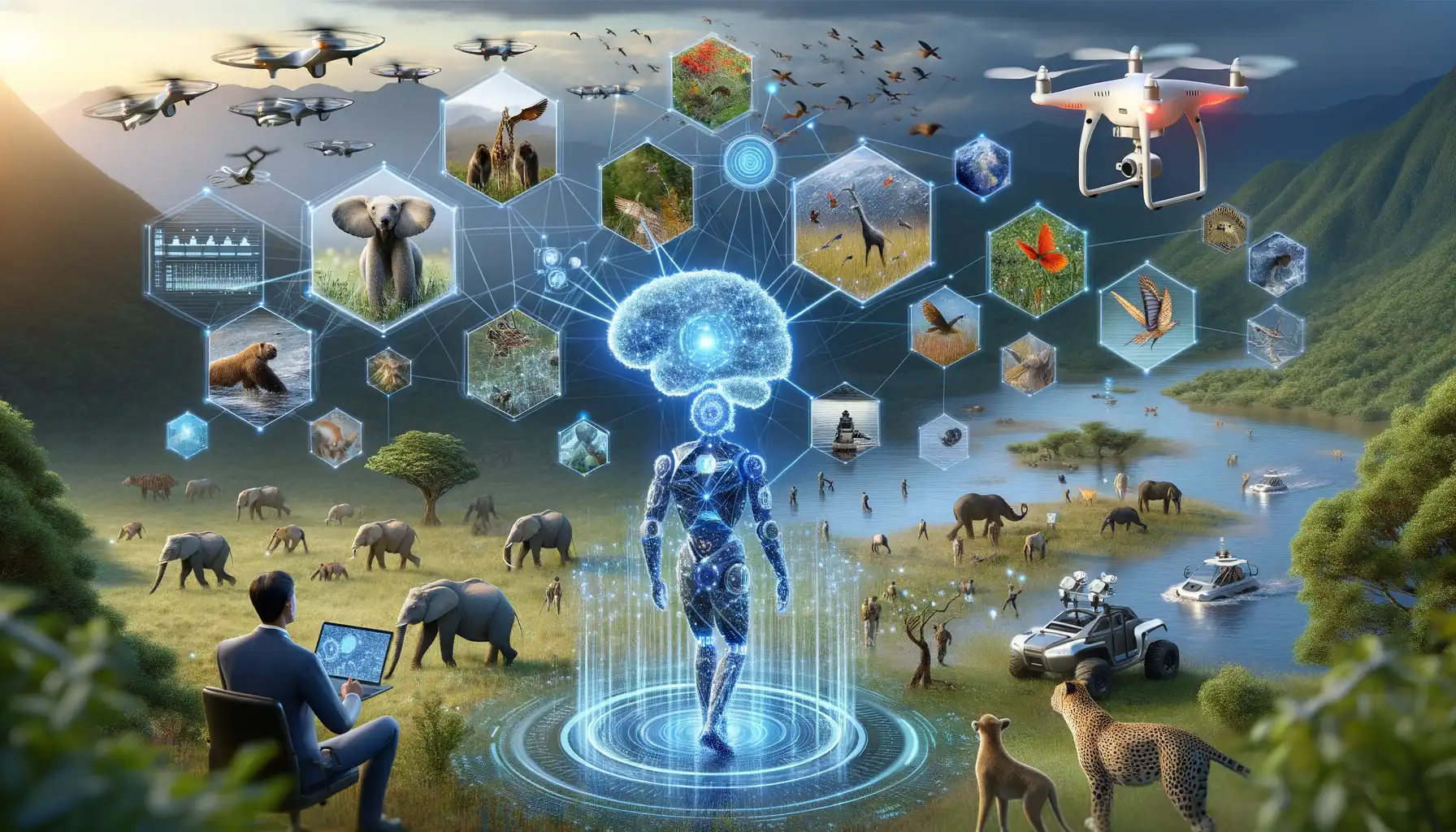The Importance of Ethical Wildlife Tourism
Why Compassionate Adventures Matter
Picture this: a majestic elephant strolling freely in its natural habitat, or a whale breaching the surface of an endless blue ocean. Now imagine tourists crowding a chained tiger for selfies or dolphins trapped in small tanks performing for applause. The contrast is heartbreaking, isn’t it? This is why ethical wildlife tourism isn’t just “nice to have”—it’s essential.
When we prioritize ethical practices, we protect not just animals but also ecosystems and even local communities. Every decision you make as a traveler matters. Did you know that inhumane attractions often mask themselves as “sanctuaries”? It’s a harsh truth, but your visit may unintentionally fund cruelty.
Here are a few red flags to look out for when it comes to unethical wildlife encounters:
- If animals are performing tricks or behaving unnaturally, it’s likely exploitation.
- Close physical interaction, like riding elephants or petting big cats, often involves abusive training methods.
- Wild animals being kept in cages or small enclosures instead of open spaces.
By being mindful, you shift the narrative from exploitation to conservation. Transform your wanderlust into a true love for wildlife by ensuring your adventures support freedom—not captivity.
How AI is Revolutionizing Wildlife Conservation

From Drones to Digital Detectives
Imagine soaring over dense rainforests or sweeping across endless savannahs—not as a tourist, but as a drone equipped with AI. This is where the magic happens. Conservationists are harnessing AI to act as their eyes in the wild, detecting everything from poachers sneaking into protected areas to dwindling numbers of endangered species.
For instance, AI-powered cameras can scan thousands of hours of footage to catch a glimpse of a snow leopard hiding in rocky terrain. They recognize patterns faster and more reliably than humans ever could—no coffee breaks required! These ingenious tools even analyze the sounds of nature, from elephant rumbles to birdsongs, helping us understand what our furry and feathered friends might be telling us.
- Smart drones: Tracking illegal deforestation and monitoring migration paths.
- AI sound recorders: Recognizing distress calls or mating signals in animal populations.
- Predictive models: Helping researchers forecast habitat destruction before it happens.
Turning Data Into Action
Here’s the kicker: AI doesn’t just gather information; it packs a punch when it comes to decision-making. Take sea turtles, for example. By analyzing nesting sites, AI can suggest where protective barriers should go or which beaches should be closed during peak nesting season.
And it gets better: AI combines decades of field data with real-time updates. This means conservation plans can evolve on the fly—like having a GPS for saving the planet. With fewer hands-on disruptions, wildlife stays wild, untouched, and thriving. It’s not just about studying animals anymore; it’s about empowering people to protect them without stepping too close.
Identifying and Avoiding Exploitation Hotspots

How to Spot Red Flags in Wildlife Tourism
Imagine this: a brightly painted roadside petting zoo advertising “Cuddle a Baby Tiger!” or an exotic bird show boasting human-like tricks. It might seem delightful, but behind those cheerful banners could lie heartbreaking exploitation. Recognizing these red flags is key to making ethical choices that respect nature and its creatures.
Here’s how to spot potential hotspots of wildlife mistreatment:
- Physical Interaction: If a tour involves hugging, riding, or posing with wild animals, it’s often harmful. Animals subjected to close contact usually endure intense stress—or worse, cruel training techniques.
- Unnatural Behavior: Ask yourself: does this animal act the way it would in the wild? Tigers lounging under neon lights or dolphins confined to pools performing spins don’t scream “authentic habitat.”
- Crowded Attractions: Oversized crowds snapping selfies can overwhelm and endanger animals. Nature thrives on balance—not flashbulbs.
The Real Cost of “Innocent” Experiences
When you see an elephant parade or a monkey dressed as a tiny bellhop, it may feel enchanting—until you dig deeper. Often, these animals are uprooted from their ecosystems, deprived of natural behaviors, and sometimes even drugged into complacency.
Consider this: would you still attend if you knew the young elephant performing tricks was taken from its mother, enduring years of forced labor? These experiences not only harm individual animals but also disrupt entire ecosystems. That snap of a parrot on your shoulder might come at the cost of deforestation or poaching.
By staying informed, watching for subtle warning signs, and asking the tough questions, you’re not just a tourist—you’re part of the solution. Let’s put exploitation in the rearview mirror!
Tools and Technology for Responsible Travel

Smart Tech for Smarter Choices
Picture this: you’re setting out on the adventure of a lifetime, determined to experience the untamed beauty of nature without leaving a negative mark behind. The secret weapon in your eco-conscious arsenal? Cutting-edge tools and technology that guide you toward responsible travel decisions.
With apps like Seek by iNaturalist, identifying plants and animals has never been easier—or more enlightening. Just snap a photo, and voilà! You’ll uncover fascinating details about the creatures and ecosystems around you, while learning how to respect their space. Another game-changer? Platforms like ResponsibleTravel.com, which connect you to vetted, ethical tour operators worldwide.
And let’s talk about AI-powered tools that go beyond just convenience. Ever heard of the Global Forest Watch? It uses satellite data to track deforestation in real time, enabling you to avoid destinations linked to habitat destruction.
- PackPoint: A packing app that tailors your luggage list, helping you include essentials like reusable water bottles and zero-waste gear.
- Google Maps’ Eco-Friendly Routes: Perfect for plotting fuel-efficient—and wildlife-friendly—journeys.
Pro tip? Don’t underestimate the power of your camera. From documenting questionable practices to showcasing conservation efforts, your smartphone can be a tool for change when wielded wisely.
Steps Towards Promoting Ethical Wildlife Encounters

Make Informed Choices Before You Travel
Picture this: You’re standing in front of a travel brochure featuring elephants painted for parades, or tiger “sanctuaries” offering selfies with cubs. It’s exciting, right? But here’s the catch—many of these attractions have dark backstories. To promote ethical wildlife encounters, your first step starts before you even pack your bags. Research is your best friend.
- Look for tours certified by organizations like World Animal Protection or Global Sustainable Tourism Council.
- Ask questions: Is the interaction feeding curiosity or exploiting animals? Transparency speaks volumes.
- Avoid anything that seems unnatural—like exotic animals available 24/7 for photos.
Remember, every dollar spent is a vote for the kind of tourism we want to see.
Your Actions Speak Louder Than Words
Once on the ground, it’s not just what you do—but how you do it—that matters. Don’t be a passive participant. Observe animals in their natural environments from a respectful distance, and resist the urge to intervene, touch, or feed. As much as you might want an “up-close moment,” trust me, your presence alone can disrupt delicate ecosystems.
And don’t forget: share your experiences back home. Post online about your responsible choices, tag tour operators who prioritize conservation, and spread awareness about why ethical tourism matters. Yes, your Instagram account can become a megaphone for change!
